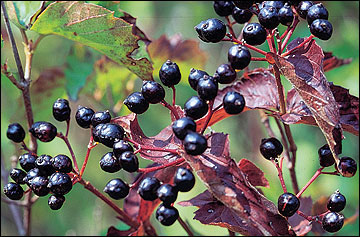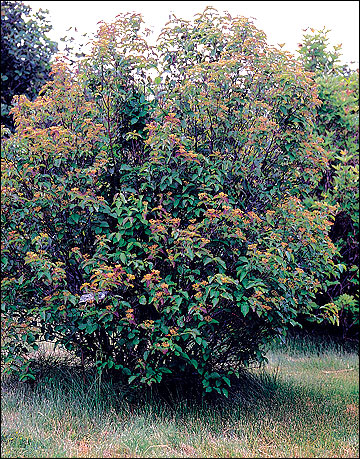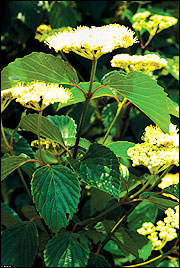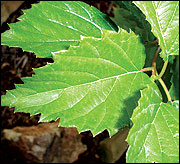Viburnum
- Viburnum spp.
- Arrowwood, Blackhaw, Nannyberry
Woody
Dense branches and foliage make viburnums good for cover, especially where they occur in thickets.
USDA-NRCS North Dakota State Soil Conservation Committee
Description
In the Midwest, many species of viburnum grow as shrubs or small trees with branching crowns. Flowers are borne in dense, flat-topped panicles that produce many red to bluish black, berrylike fruits in fall. The leaves are opposite and turn brilliant shades of deep rose-purple to rose-red or bright red in fall. Viburnums occur throughout the Midwest, sometimes in thickets, in association with rocky or dry woods, glades and rich, moist valleys along streams.
Bloom period
April to June
Use by bobwhites
Viburnum fruits are eaten by many birds. Thickets near streams may provide quail relief from summer heat. The seeds persist through winter and may provide a valuable food source for quail when other foods become scarce. The combination of its food and cover values for quail and its aesthetic, visual qualities make viburnums an attractive plant in quail habitat projects.

Mature fruits are red to bluish black, depending on the species.
USDA-NRCS North Dakota State Soil Conservation Committee





